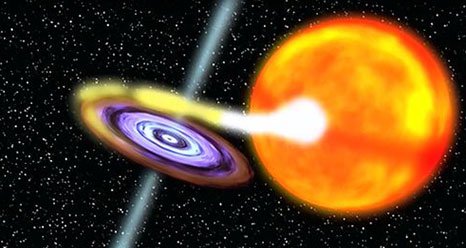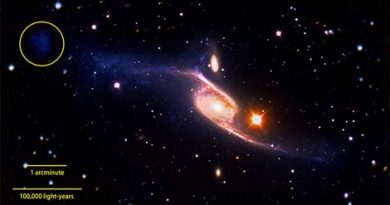NASA’s Parker solar probe gets sizzling hot (science news).
The Sun is revealing itself in dramatic detail and shedding light on how other stars may form and behave throughout the universe – all thanks to NASA’s Parker Solar Probe. The spacecraft is enduring scorching temperatures to gather data, which are being shared for the first time in four new papers that illuminate previously unknown and only-theorised characteristics of our volatile celestial neighbour.
The information Parker has uncovered about how the Sun constantly ejects material and energy will help scientists rewrite the models they use to understand and predict the space weather around our planet, and understand the process by which stars are created and evolve. This information will be vital to protecting astronauts and technology in space – an important part of NASA’s Artemis program, which will send the first woman and the next man to the Moon by 2024 and, eventually, on to Mars.
The four papers, now available online from the journal Nature, describe Parker’s unprecedented near-Sun observations through two record-breaking close flybys. They reveal new insights into the processes that drive the solar wind – the constant outflow of hot, ionised gas that streams outward from the Sun and fills up the solar system – and how the solar wind couples with solar rotation. Through these flybys, the mission also has examined the dust of the coronal environment, and spotted particle acceleration events so small that they are undetectable from Earth, which is nearly 93 million miles from the Sun.

During its initial flybys, Parker studied the Sun from a distance of about 15 million miles. That is already closer to the Sun than Mercury, but the spacecraft will get even closer in the future, as it travels at more than 213,000 mph, faster than any previous spacecraft.
“This first data from Parker reveals our star, the Sun, in new and surprising ways,” said Thomas Zurbuchen, associate administrator for science at NASA Headquarters in Washington. “Observing the Sun up close rather than from a much greater distance is giving us an unprecedented view into important solar phenomena and how they affect us on Earth, and gives us new insights relevant to the understanding of active stars across galaxies. It’s just the beginning of an incredibly exciting time for heliophysics with Parker at the vanguard of new discoveries.”
Among the findings are new understandings of how the Sun’s constant outflow of solar wind behaves. Seen near Earth, the solar wind plasma appears to be a relatively uniform flow – one that can interact with our planet’s natural magnetic field and cause space weather effects that interfere with technology.
Instead of that flow, near the Sun, Parker’s observations reveal a dynamic and highly structured system, similar to that of an estuary that serves as a transition zone as a river flows into the ocean. For the first time, scientists are able to study the solar wind from its source, the Sun’s corona, similar to how one might observe the stream that serves as the source of a river. This provides a much different perspective as compared to studying the solar wind were its flow impacts Earth.
One type of event in particular caught the attention of the science teams – flips in the direction of the magnetic field, which flows out from the Sun, embedded in the solar wind and detected by the FIELDS instrument. These reversals – dubbed “switchbacks” – appear to be a very common phenomenon in the solar wind flow inside the orbit of Mercury, and last anywhere from a few seconds to several minutes as they flow over the spacecraft. Yet they seem not to be present any farther from the Sun, making them undetectable without flying directly through that solar wind the way Parker has.
During a switchback, the magnetic field whips back on itself until it is pointed almost directly back at the Sun. These switchbacks, along with other observations of the solar wind, may provide early clues about what mechanisms heat and accelerate the solar wind. Not only does such information help change our understanding of what causes the solar wind and space weather affecting Earth, it also helps us understand a fundamental process of how stars work and how they release magnetic energy into their environment.
In a separate publication, based on measurements by the Solar Wind Electrons Alphas and Protons (SWEAP) instrument, researchers found surprising clues as to how the Sun’s rotation affects the outflow of the solar wind. Near Earth, the solar wind flows past our planet as if it travels initially in almost straight lines – or “radially,” like spokes on a bicycle wheel – out from the Sun in all directions. But the Sun rotates as it releases the solar wind, and before it breaks free, the solar wind is expected to get a push in sync with the Sun’s rotation.
As Parker ventured to a distance of around 20 million miles from the Sun, researchers obtained their first observations of this effect. Here, the extent of this sideways motion was much stronger than predicted, but it also transitioned more quickly than predicted to a straight, strictly outward flow, which helps mask the effects at a larger distance.
This enormous extended atmosphere of the Sun will naturally affect the star’s rotation. Understanding this transition point in the solar wind is key to helping us understand how the Sun’s rotation slows down over time, with implications for the lifecycles of our star, its potentially violent past, as well as other stars and the formation of protoplanetary disks, dense disks of gas and dust encircling young stars.
Parker also observed the first direct evidence of dust starting to thin out around 7 million miles from the Sun – an effect that has been theorised for nearly a century, but has been impossible to measure until now. These observations were made using Parker’s Wide-field Imager for Solar Probe (WISPR) instrument, at a distance of about 4 million miles from the Sun.
Scientists have long suspected that close to the Sun, this dust would be heated to high temperatures, turning it into a gas and creating a dust-free region around the star. At the observed rate of thinning, scientists expect to see a truly dust-free zone beginning at a distance of about 2-3 million miles from the Sun, which the spacecraft could observe as early as September 2020, during its sixth flyby. That dust-free zone would signal a place where the material of the dust has been evaporated by the Sun’s heat, to become part of the solar wind flying past Earth.
Finally, Parker’s Integrated Science Investigation of the Sun (ISʘIS) energetic particle instruments have measured several never-before-seen events so small that all traces of them are lost before they reach Earth. These instruments have also measured a rare type of particle burst with a particularly high ratio of heavier elements – suggesting that both types of events may be more common than scientists previously thought.
Solar energetic particle events are important, as they can arise suddenly and lead to space weather conditions near Earth that can be potentially harmful to astronauts. Unravelling the sources, acceleration and transport of solar energetic particles will help us better protect humans in space in the future.
“The Sun is the only star we can examine this closely,” said Nicola Fox, director of the Heliophysics Division at NASA Headquarters. “Getting data at the source already is revolutionising our understanding of our own star and stars across the universe. Our little spacecraft is soldiering through brutal conditions to send home startling and exciting revelations.”



